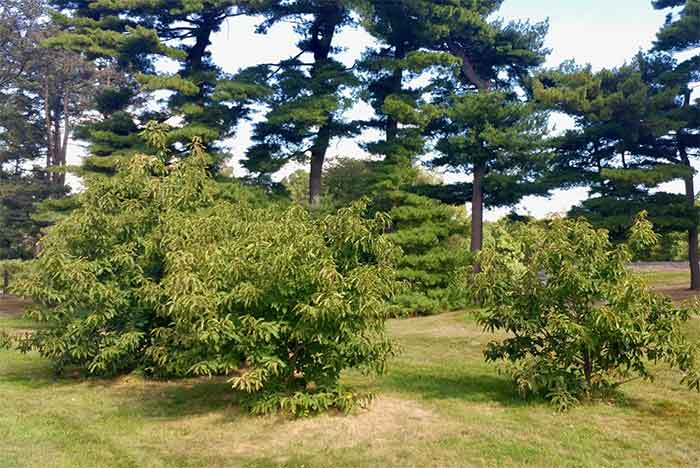A stunning admission by the American Chestnut Foundation exposes the nation’s broken regulatory system.

On December 8, the American Chestnut Foundation (TACF) announced it withdrew support “for several pending regulatory petitions that would authorize distribution of transgenic Darling 58 trees outside permitted research plots.” The announcement was shocking, one that should have huge implications for the idea of releasing GMOs into the wild. The petition with the U.S. Department of Agriculture (USDA) is still pending.
TACF, in league with the State University of New York Environmental School of Forestry (SUNY-ESF) has been publicly stating that it can restore the dominance of the American chestnut, which was decimated by logging and blight, with a genetically engineered version called Darling 58 (D58).
They claimed D58 was engineered with a wheat gene inserted into its genome to enable it to resist the blight. It was a high-profile venture intended to deregulate, for the first time, a GE plant for release into the wild to contaminate its wild relatives, something Dr. Donald Davis, an expert on the history of the American Chestnut, called “a massive and irreversible experiment.”
More recent statements by TACF have revealed that it was not merely because of “significant performance limitations” of the Darling progeny that TACF has withdrawn its support but also because they have been working with the wrong GE tree.
The TACF press release explained that “a significant identity error in the propagation materials supplied to TACF” had occurred, and that “independent confirmation now shows all pollen and trees used for this research was derived not from Darling 58.” Throughout the regulatory process, no one noticed that they were working with the wrong tree.
Not since cold fusion has so much scientific hype been generated around a fundamental error. It strains credulity that the federal government was so close to making such a monumental, precedent-setting regulatory decision based on misinformation. This should call into question any and all claims by SUNY-ESF about their GE tree research and disqualify this and future petitions by them.
The Campaign to STOP GE Trees, which is a campaign of my organization, Global Justice Ecology Project, has, for years, argued that the Darling 58 is a Trojan horse: an iconic tree used to reduce public opposition to GE trees in general and to support approval for other more commercial applications of the technology.
Despite the shocking admission by TACF that their Darling 58 is not what they claimed, this regulatory threat still exists, and the Campaign to STOP GE Trees will remain vigilant until the USDA pulls the plug on this ill-conceived experiment.
Benefiting from the public relations efforts of SUNY-ESF, TACF and other pro-GMO organizations, headlines in small newspapers to giants such as the New York Times considered the project as a fait accompli giving scientific concerns raised by organizations such as ours tertiary acknowledgement.
So ubiquitous was the praise for the D58 that a recent headline stated, “ESF scientist who brought back American chestnut tree from the brink of extinction has died.” The story was a well-meaning memorial to the scientist who headed the D58 project, yet it exemplifies how the press overstated the success of the D58. With TACF officially withdrawing its support for the D58, it is now the responsibility of those outlets to let the public know that the unparalleled support for the GE tree was misplaced and that the silvicultural messiah was less than all that.
The Campaign to Stop GE Trees will continue to echo the warnings of scientists who urge caution, such as TACF’s former staff geneticist, Dr. Paul Sisco, who said there needs to be 50 years of testing before release, given that the trees are long-lived organisms. Sisco also expressed concern that since only young trees were tested that they do not know whether these genes will have unintended side effects on the trees, or the organisms that interact with the trees as they mature.
In fact, one the reasons TACF stated for withdrawing its support was poor performance as the trees matured. This underscores the impossible task of understanding the impacts of introducing long-lived organisms into the wild, not to mention researching the wrong variant.
As the promise of the Darling 58 withers on the proverbial vine, it remains a cautionary tale of publicity-driven science, as well as a wake-up call to our collapsing regulatory environment and our agencies’ inherent inability to regulate proposals to release genetically engineered long-lived organisms into the wild.
Steve Taylor is the communications director for Global Justice Ecology Project.
This article was produced by Earth | Food | Life, a project of the Independent Media Institute.















































